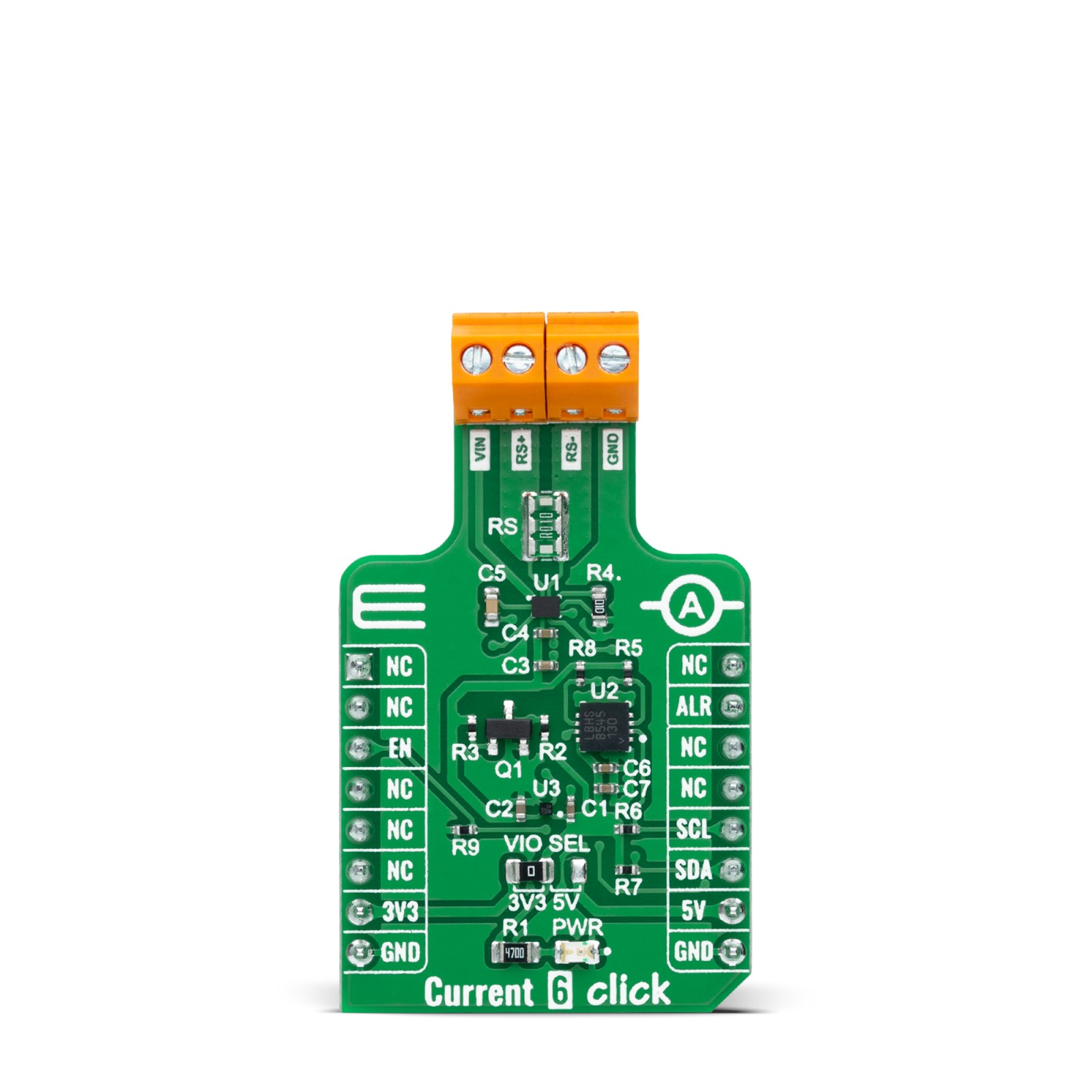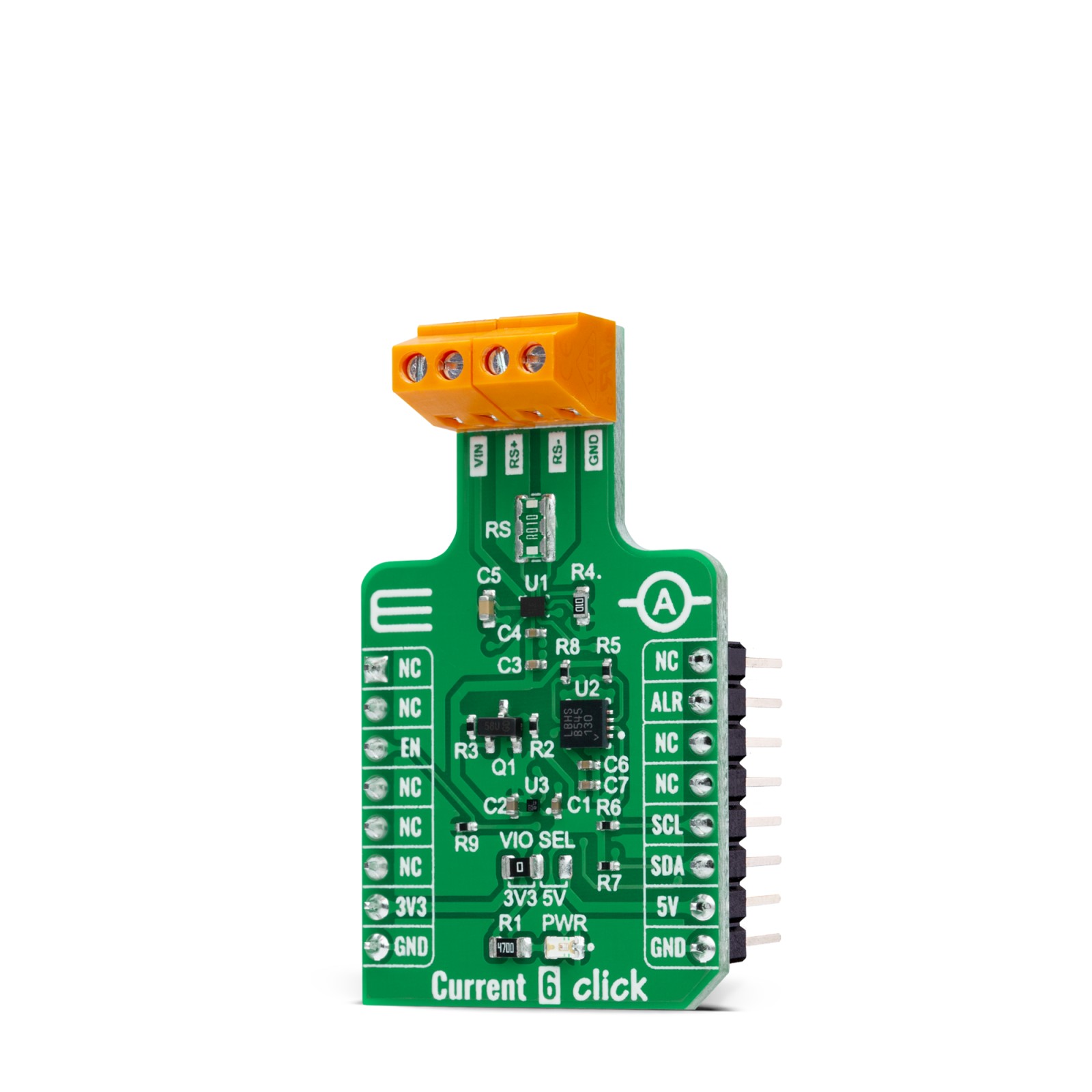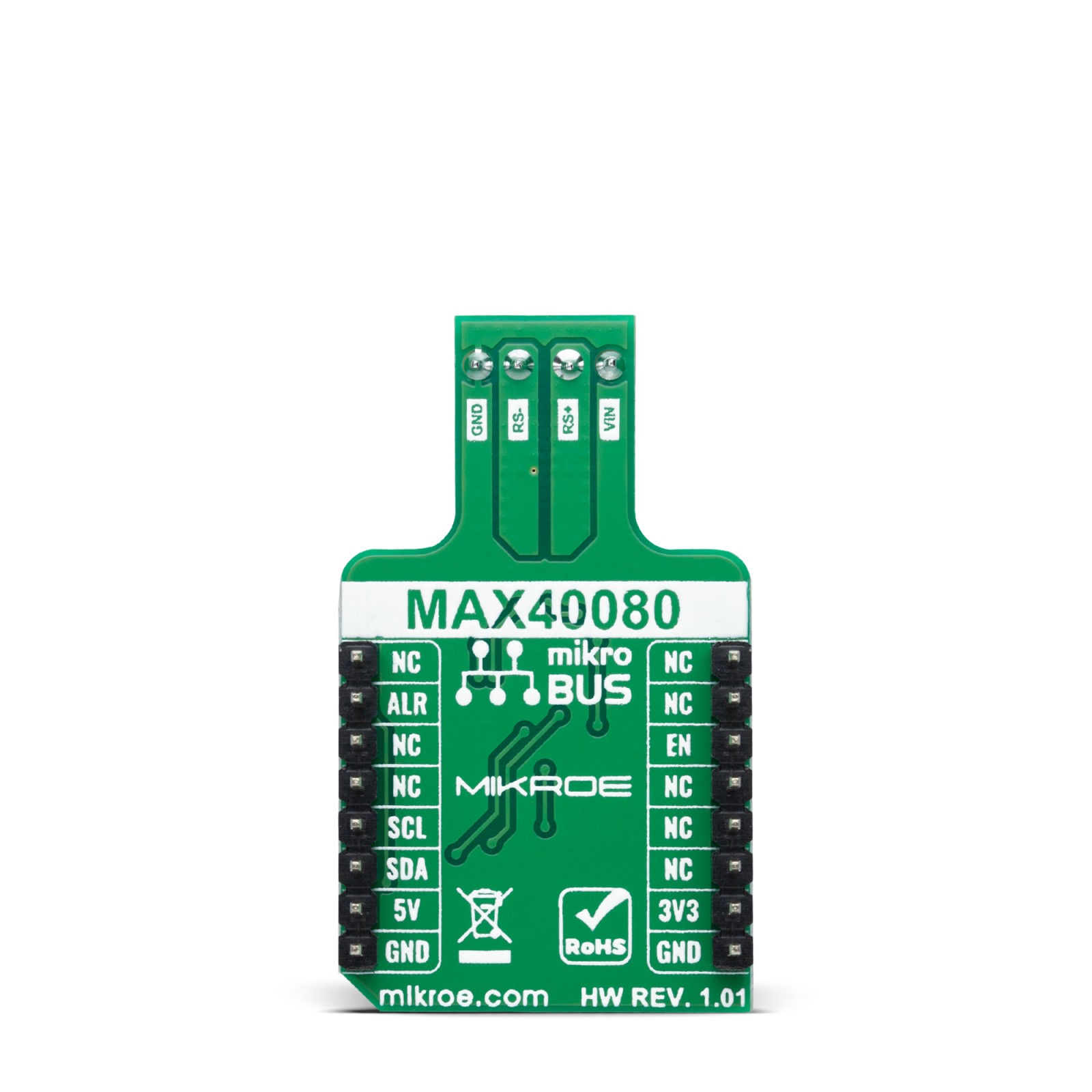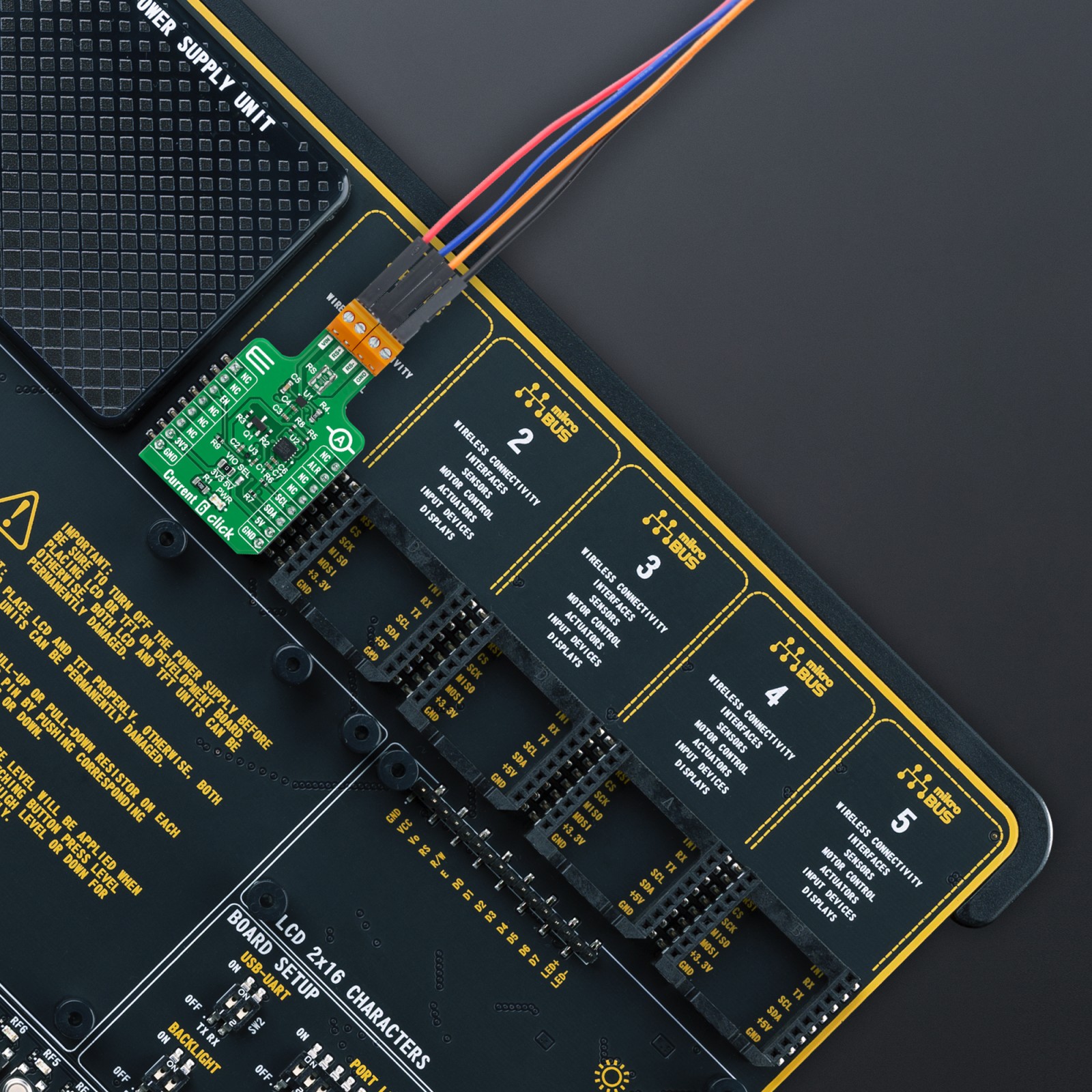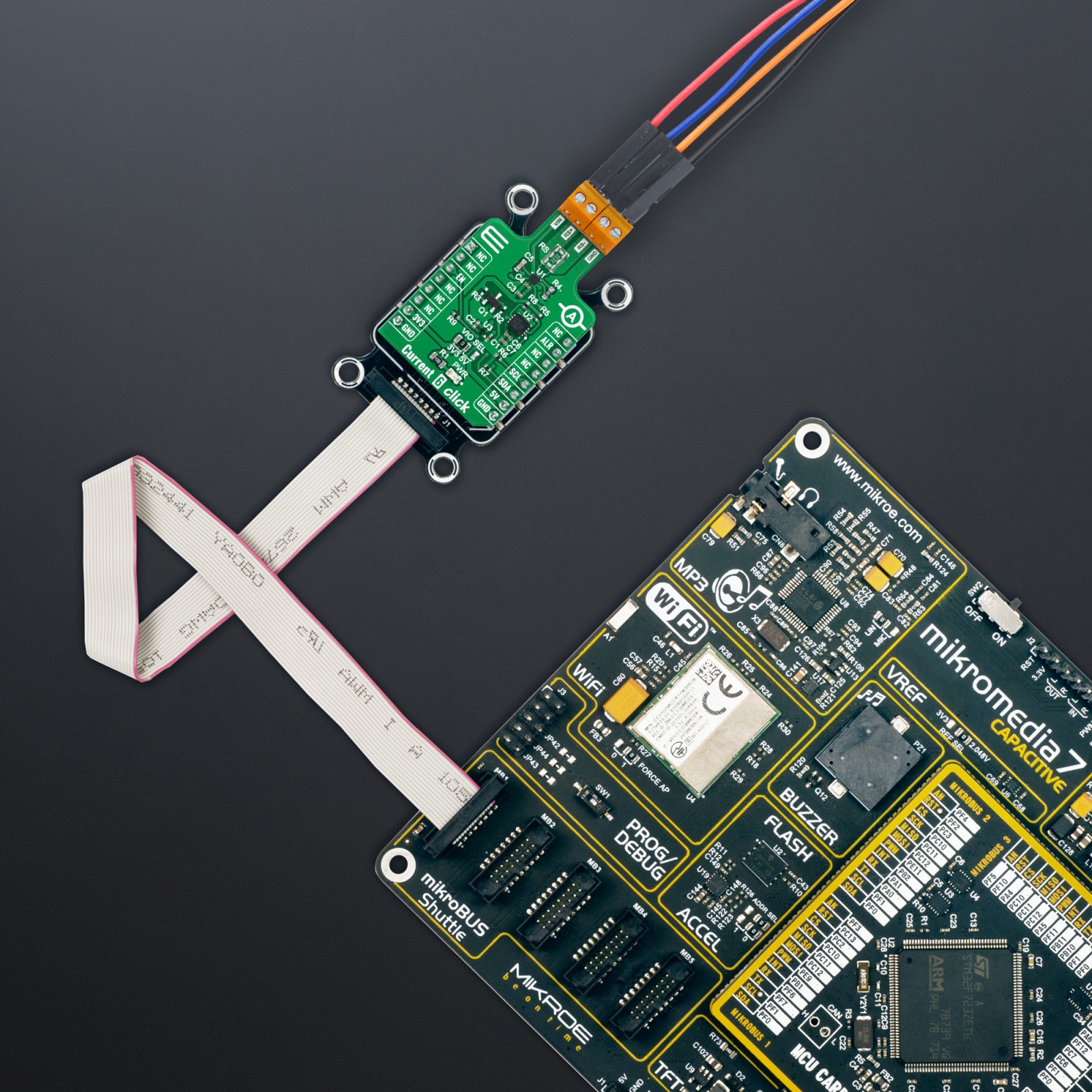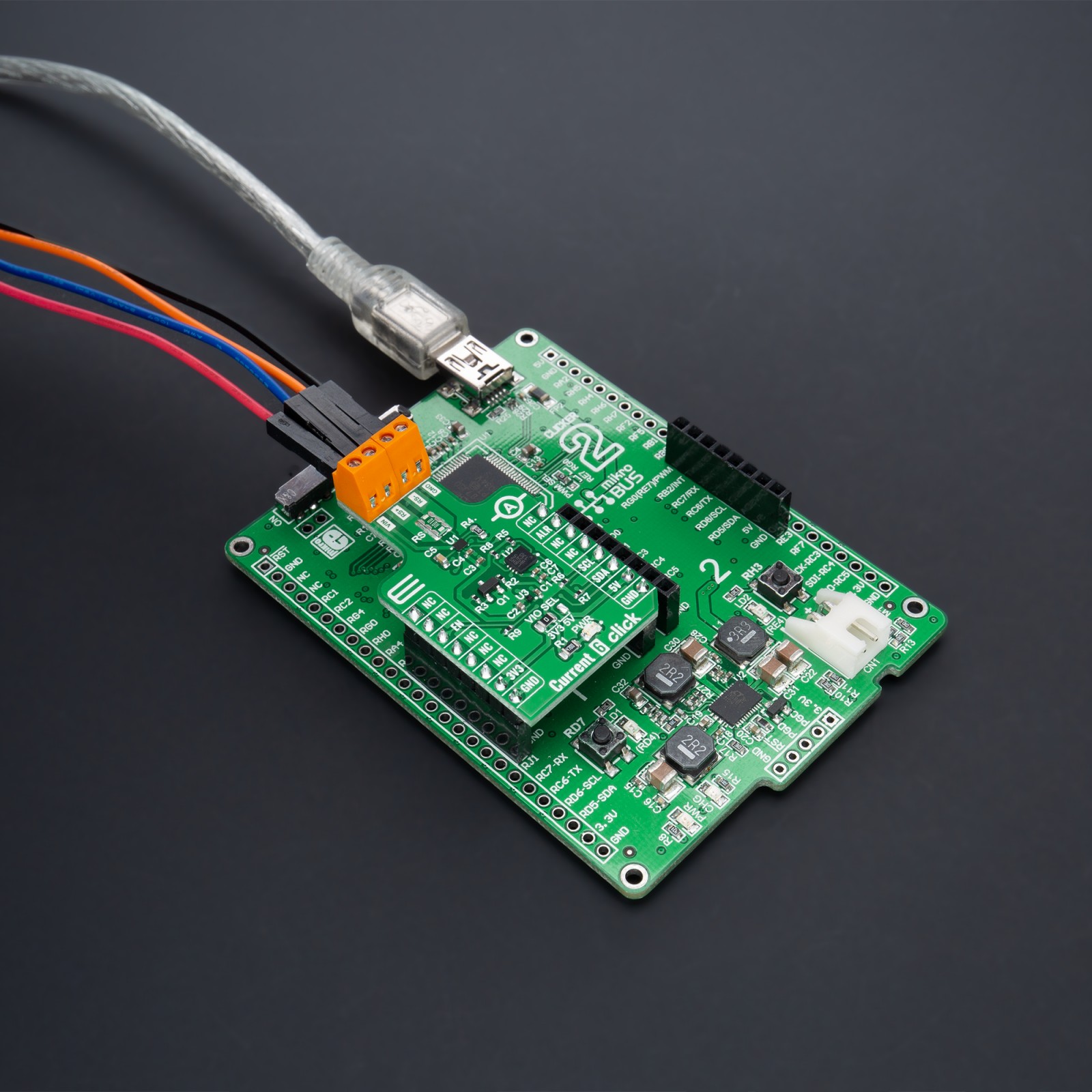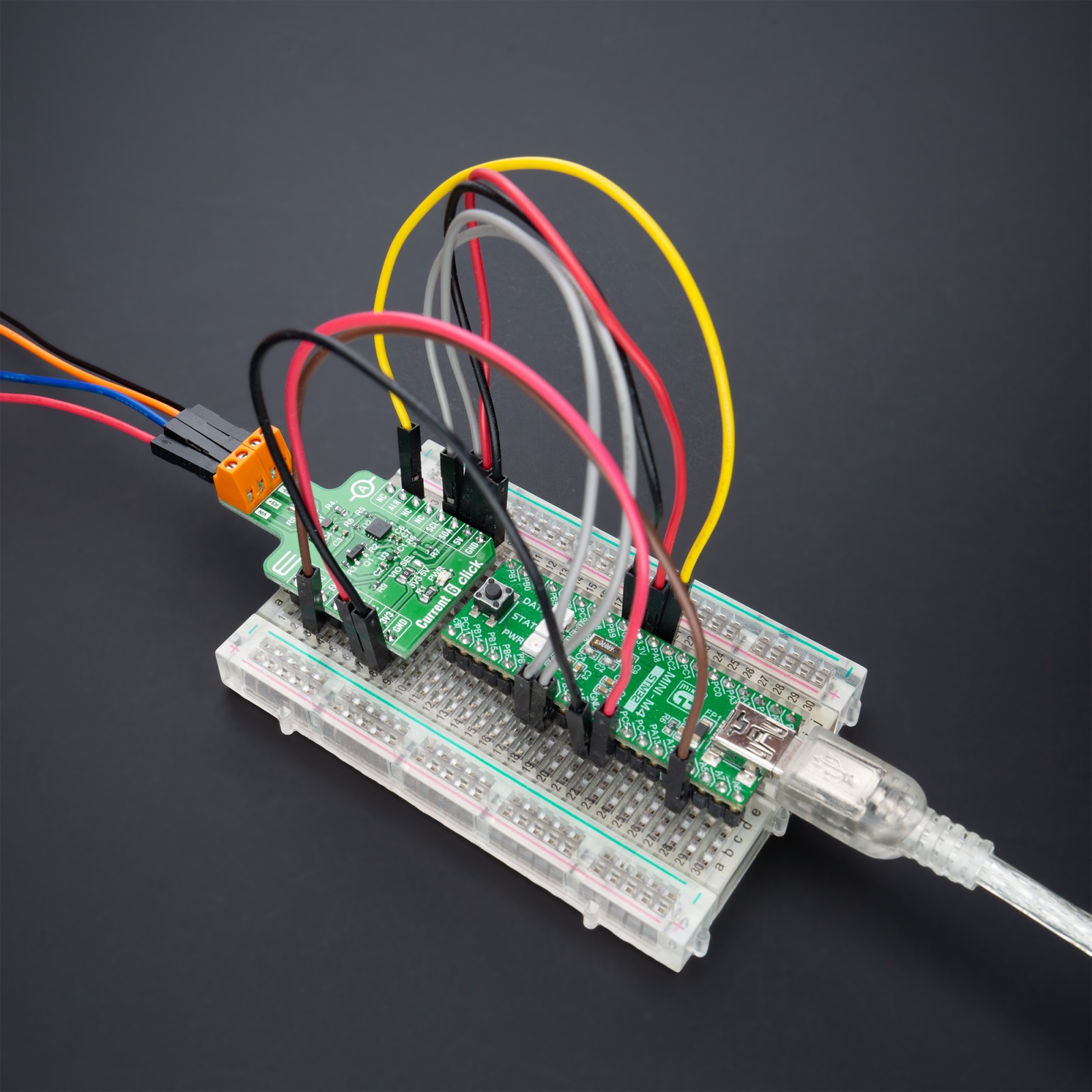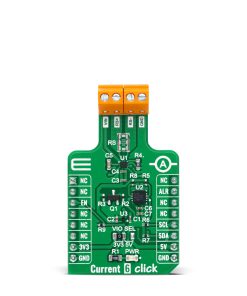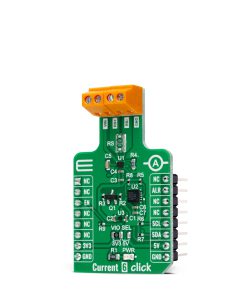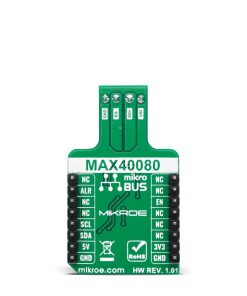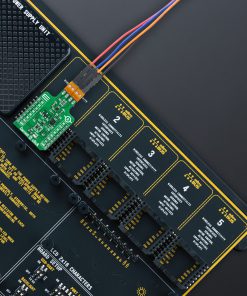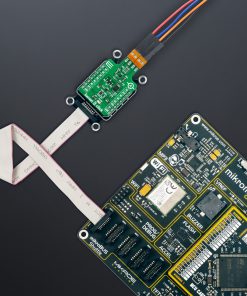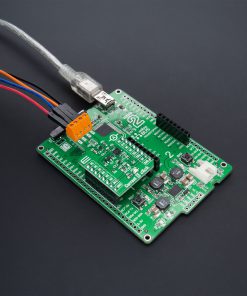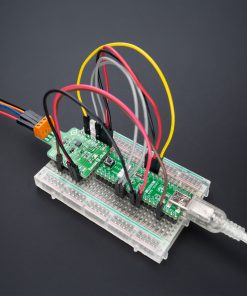Subtotal: R630.00
Current 6 Click
R710.00 ex. VAT
Current 6 Click is a compact add-on board providing a precise and accurate current sensing solution. This board features the MAX40080, a fast-response bi-directional current-sense amplifier from Analog Devices. The device features ultra-low 5uV input offset voltage, very-low 0.2% gain error, and includes an analog-to-digital converter with programmable sample rate and 12-bit resolution featuring I2C compatible interface. It also features a wake-up current-threshold and auto-shutdown mode when the I2C is inactive, both designed to minimize power consumption. The current-shunt monitor can measure voltage signals on common-mode voltages ranging from -0.1V (ground sensing) to 36V, independent of the supply voltage. This Click board™ delivers higher performance to industrial control and automation applications, load and power supplies monitoring, telecom equipment, and many more.
Current 6 Click is supported by a mikroSDK compliant library, which includes functions that simplify software development. This Click board™ comes as a fully tested product, ready to be used on a system equipped with the mikroBUS™ socket.
Stock: Lead-time applicable.
| 5+ | R674.50 |
| 10+ | R639.00 |
| 15+ | R603.50 |
| 20+ | R580.78 |

 DAC Click
DAC Click  Proximity Click
Proximity Click 